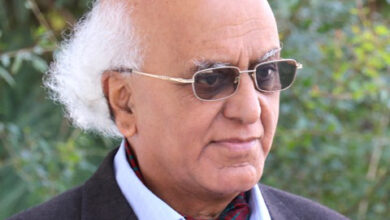Mitigating the risks of CEPA for Bangladesh
Bangladesh needs to find some sustainable solutions to remove the barriers in such a way that CEPA doesn’t pose risk to the trade of Bangladesh.

According to the Bangladesh Foreign Trade Institute (BFTI), signing the proposed Comprehensive Economic Partnership Agreement (CEPA) with India may pose risks for Bangladesh’s domestic industry, revenue and jobs. But signing the deal is crucial for Bangladesh because Bangladesh is going to complete its LDC graduation in 2026. So, what remains as a barrier to signing this deal? The BFTI, which carried out the study at the instruction of the ministry of commerce, said: “Port-related access and lack of adequate hard infrastructure, trade facilitation-related soft infrastructure, and shipping lines pose tremendous challenges to the trade of Bangladesh.” Does that mean Bangladesh should withdraw itself from signing this Comprehensive Economic Partnership Agreement? The answer is “No”.
Bangladesh needs to find some sustainable solutions to remove the barriers in such a way that CEPA doesn’t pose risk to the trade of Bangladesh. As Bangladesh lacks the adequate infrastructure in ports and trade facilitation measures, there is the need to increase the capacity of the land ports.

The deadlock of land ports due to the congestion of trucks is one of the significant issues that needs to be addressed to increase the capacity of land ports. Though the Benapole port remains the most significant trading point between India and Bangladesh, congestion remains a primary concern. It is important to have a four-lane road that connects Benapole. Constructing a second cargo gate will help faster cargo clearance. Comparatively, Agartala-Akhaura port has better facilities related to NH 8 through an arterial road. It is the second largest land port. Transit trade is greatly challenged by highway infrastructure in each of the countries. According to the World Bank, transport vehicles within Bangladesh have “an average speed of 19 kilometres an hour along main corridors”, indicating that the roads are congested. This is evident from the fact that the handling capacity of both Bangladesh and India across the Benapole–Petrapole border is asymmetrical. Parking mafias operating in the border area benefit from the delay in clearing the customs for loading and unloading of cargo.
India and Bangladesh must undertake trade facilitation measures to significantly reduce current physical and nonphysical barriers to transportation and transit to boost two-way trade. It can be done by two means. Firstly, through visible infrastructural development (i.e. connectivity infrastructure, railroad and waterways, land ports, water ports) and invisible infrastructural development (such as reformed policies, procedures, and regulations). These areas need special attention from policymakers and researchers in Bangladesh and India.

Infrastructural development in the land ports of Bangladesh also needs immediate attention. Though the Petrapole land port on the Indian side has been modernised, Benapole requires attention. Under the World Bank Bangladesh Regional Connectivity Project, infrastructure in three land ports of Bangladesh—Ramgarh, Sheola, and Benapole—are being developed, and Bhomra, Burimari, and Bholaganj are under consideration.
Both countries should emphasise administrative reform, governance, and security. Customs is an intrinsic element of India-Bangladesh’s cross-border movement of goods and services and yields significant influence on bilateral trade. Also, customs perform other vital functions such as revenue collection and protection against dangerous goods. The time taken for clearance of goods has an impact on the competitiveness of the products. So, India-Bangladesh should bring administrative reforms in order to better manage port activities.

More areas that need reform are reducing the high transaction cost of export and easing the complexity of cross-border trading procedures. Complex requirements in cross-border trade increase the possibility of corruption. For example, at the critical border-crossing point between India and Bangladesh, as many as 1,500 trucks queue up on both sides, with waiting times varying between one and five days to complete documentation requirements. Expediting customs clearance procedures reduces the discretionary power of customs officials, thus reducing the scope for corruption. Efficient, friendly, and corruption-free customs can help boost trade and investment.
Increasing the capacity of the India-Bangladesh land ports is crucial for bilateral trade relations, especially for CEPA. And for getting the maximum benefit of CEPA, trade liberalisation is a necessary condition, but more is needed. To achieve substantial progress in bilateral and regional trade between India and Bangladesh, utmost priority should be given to developing infrastructure facilities. Additionally, complementary policy reform in the transport sector, accompanied by improved procedural and operational efficiency is essential to increase the capacity of land ports.
Samara Ashrat is a PhD fellow, International Relations, University of Bucharest.




